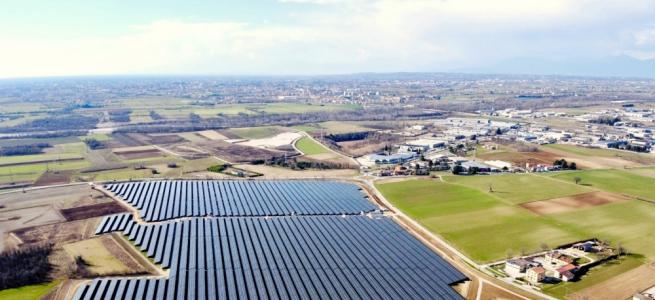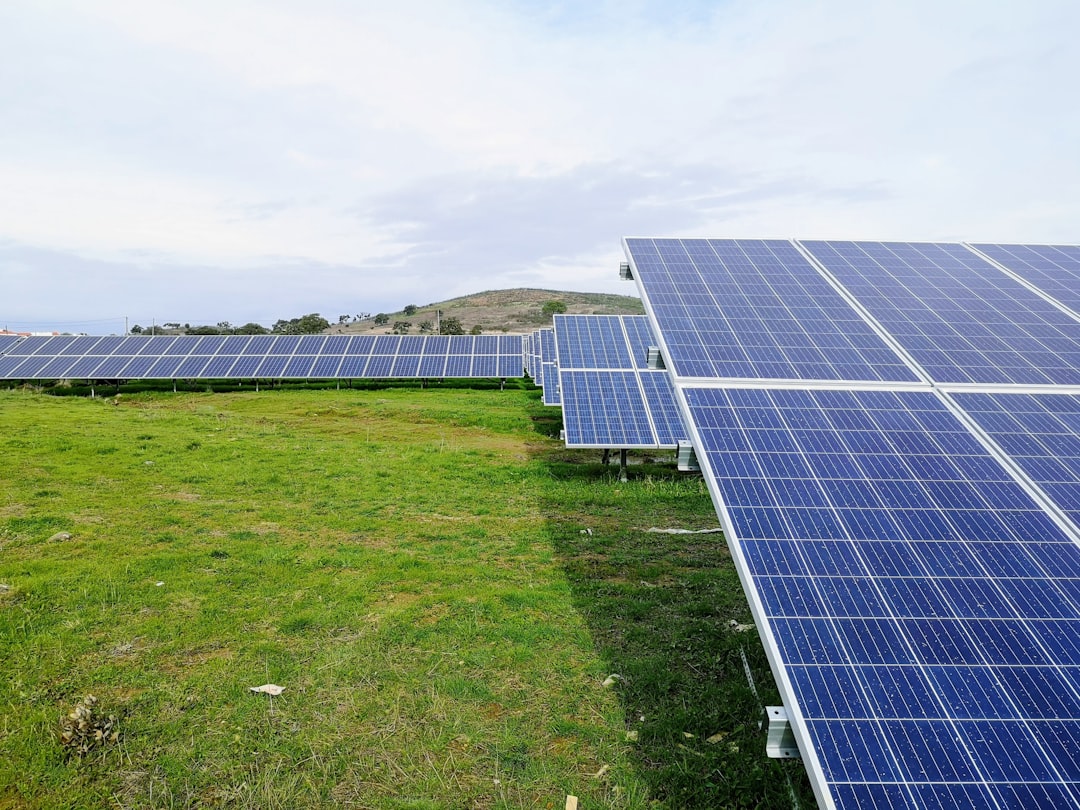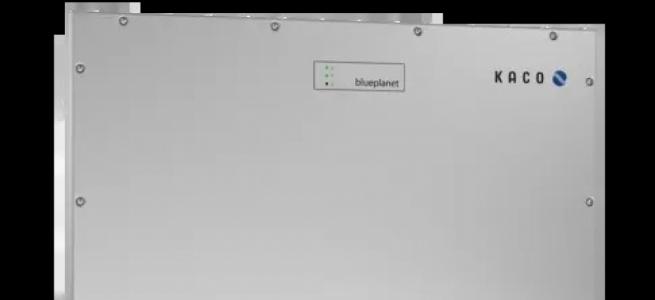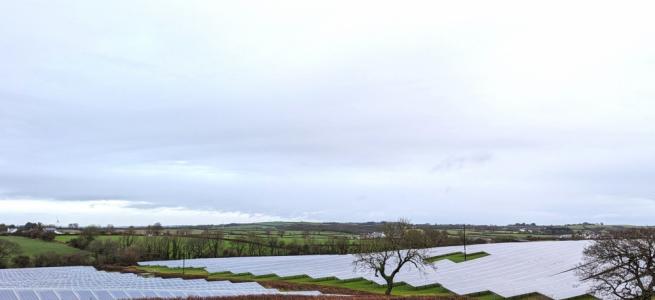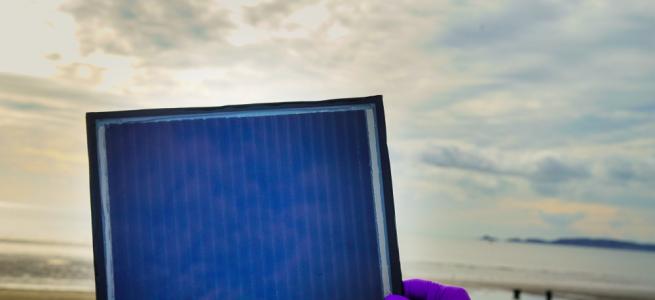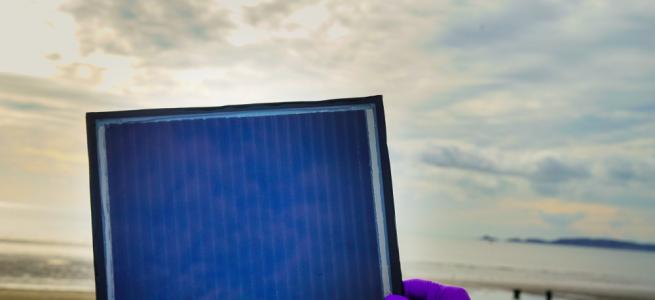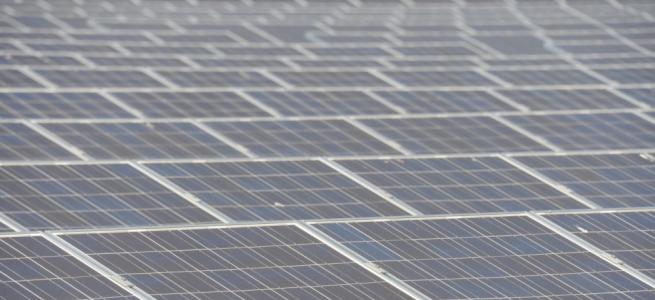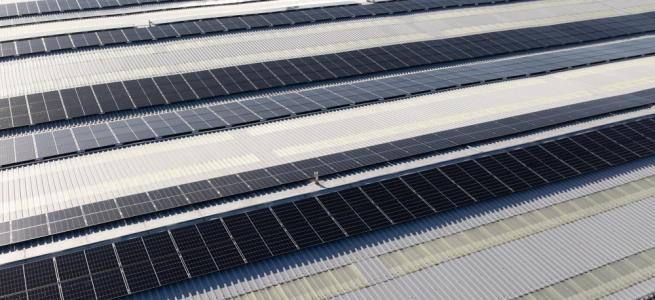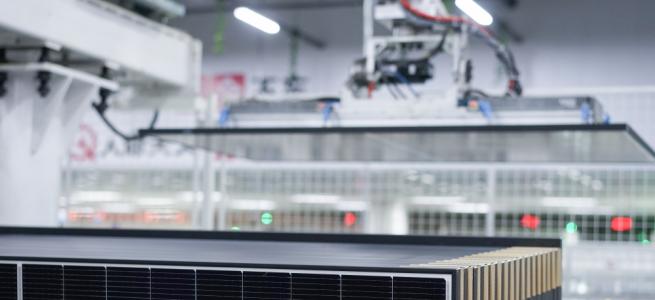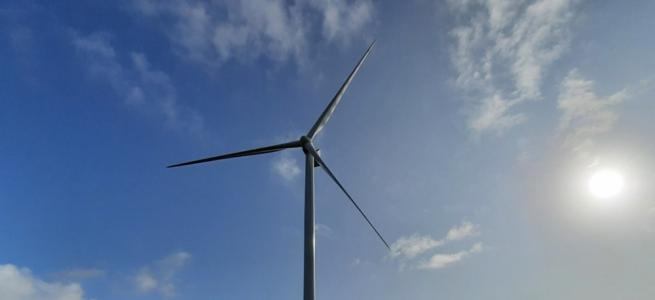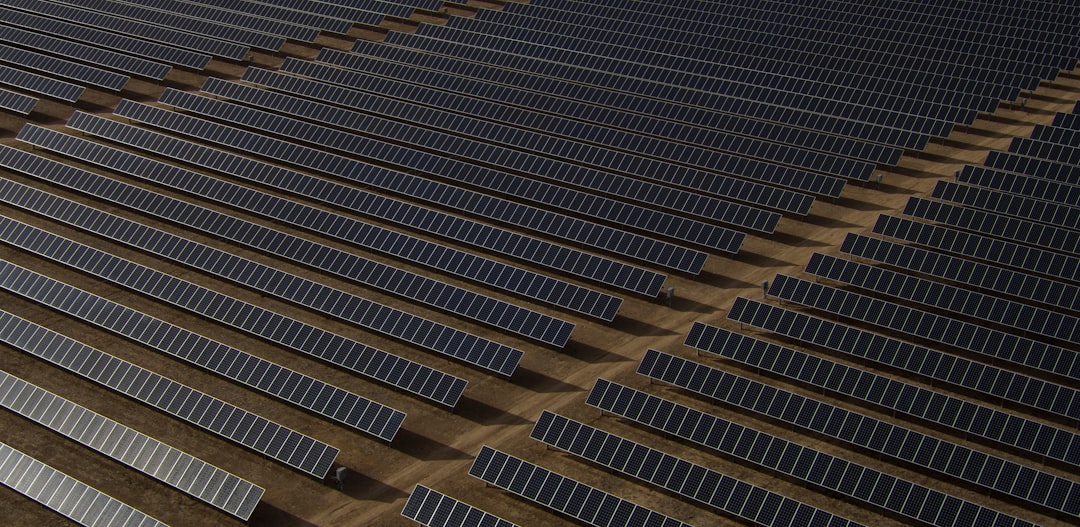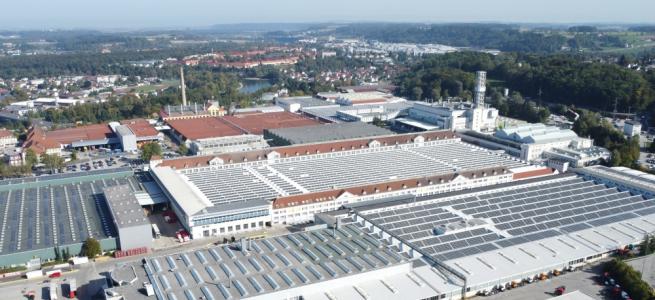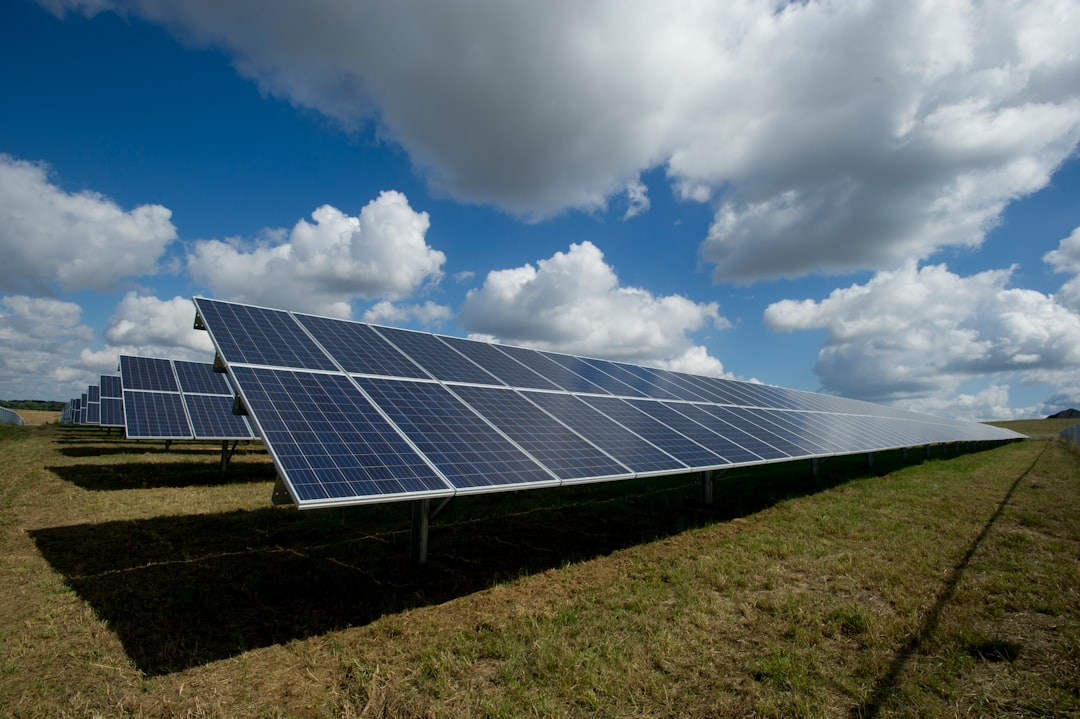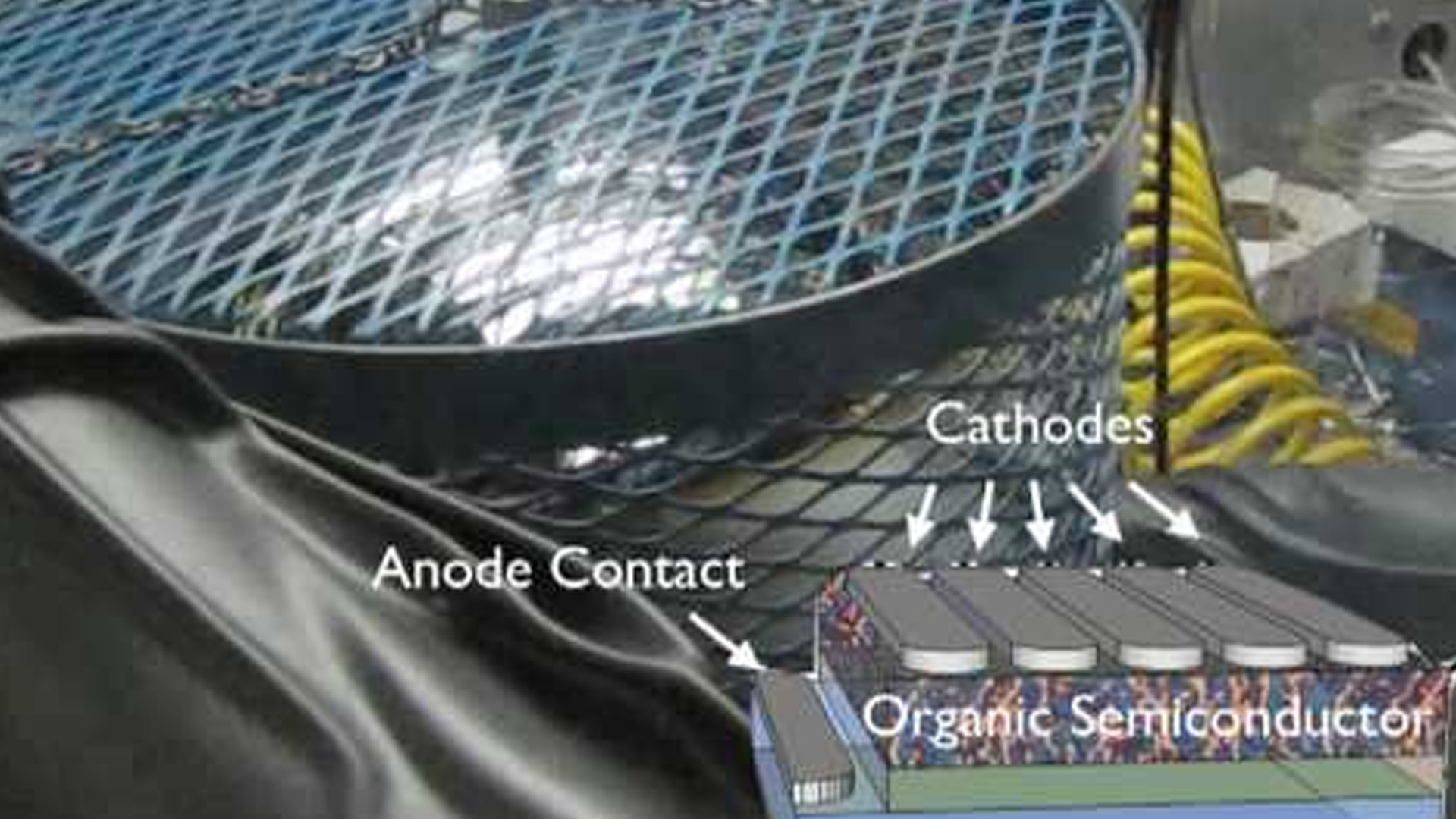News Article
A Hybrid Approach To Inverters
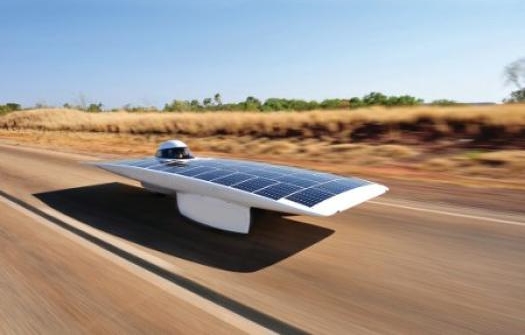
Inverters are now recognised as a key technology for solar and PV and are a focus for companies seeking continual improvements.
Dr. Georges Tchouangue, Chief Engineer for Power Semiconductors at Toshiba Electronics Europe discusses a SiC hybrid approach to inverter technology.
Silicon carbide (SiC) devices have the potential to unlock performance and efficiency improvements in applications ranging from rail traction to renewable energy generation. Now, the introduction of hybrid technologies that combine these performance and efficiency advantages with the high-power handling capabilities of silicon injection-enhanced gate transistors (IEGTs) is providing engineers with an effective way of significantly reducing losses while minimizing equipment size.
Improving the efficiency of motor drives, even by only a small percentage, can save a significant quantity of energy normally wasted as heat. This can translate into positive benefits for business operating costs, equipment design and performance, and carbon footprint. High-power semiconductors have made tremendous advances in recent years, as new device architectures, fabrication processes and technologies have helped to improve both switching and conduction efficiency.
In order to meet wider system requirements such as reliability and overall cost, designers of high-power controllers such as choppers and inverters are typically faced with a choice of a thyristor or Insulated Gate Bipolar Transistor (IGBT) as the main switching element. Both device types have strengths and weaknesses, which force designers to make a selection that will deliver the best compromise in relation to a given application.
Power switch performance
Generally, thyristors have a low forward voltage, resulting in low conduction losses, but can require more complicated commutation circuitry to turn the device off. The Gate Turn Off (GTO) thyristor overcomes this reliance on commutation circuitry, although switching efficiency remains lower than that of an IGBT.
The IGBT combines the advantage of a voltage-controlled Metal-Oxide Semiconductor (MOS) gate, which allows relatively simple gate-drive circuitry, with the low saturation voltage of a bipolar transistor. Its ability to support high switching frequencies allows the use of smaller capacitive and inductive components. The IGBT also has a large Safe Operating Area (SOA), which helps enhance safety and reliability. The one drawback of the IGBT is its relatively high saturation voltage, compared to the thyristor's low forward voltage, resulting in higher conduction losses which can impair overall energy efficiency.
Injection enhancement gate transistors
In recent years we have seen the development of the Injection Enhancement Gate Transistor (IEGT). These combine the ease of use, support for high switching speeds, and large SOA of the IGBT with high conduction efficiency normally associated with a thyristor"“based design.
The IEGT is a high-power trench MOS gate device that behaves in the same way as an IGBT, yet has a low saturation voltage comparable to the forward voltage of a thyristor. The thyristor's low forward voltage is the product of high carrier concentration resulting from the injection of electrons at both the anode and the cathode. In contrast, the conduction performance of a conventional IGBT is governed by the movement of holes from the collector to the emitter resulting in a relatively low carrier concentration at the emitter side.
The IEGT process, combined with an optimised gate structure and distance between electrodes, overcomes this limitation of the IGBT by creating a high carrier concentration similar to that of a thyristor, allowing the saturation voltage to be much lower than a conventional IGBT and comparable to the forward voltage of the thyristor. The blocking voltage is also higher than that of an IGBT, and similar to that of a thyristor.
Diode reverse recovery
In power-conversion applications where anti-parallel diodes are connected to conduct freewheel currents, the reverse-recovery characteristic of the diode has an important effect on the operating efficiency of the circuit. When conducting freewheeling current, the diode stores charge as minority carriers that contribute to minimising the diode forward voltage. When the diode is commutated, this stored charge must be neutralised by recombination and reverse-current flow before the diode can behave as if turned off. This process of reverse recovery contributes a proportion of system energy losses.
To minimise these losses, equipment designers have typically used ultrafast or hyperfast silicon Fast-Recovery Diodes (FRDs) that have the shortest possible recovery time. In many cases these FRDs are integrated within the power module.
Next-Generation IEGT/SiC power module
To further enhance the efficiency of high-power IEGT modules, Toshiba has introduced its latest-generation IEGT modules with integrated Silicon carbide (SiC) Schottky Barrier Diodes (SBDs). Figure 1 shows the connections and internal circuit of the module. As a wide bandgap semiconductor technology, SiC allows greater efficiency and reliability than conventional silicon devices such as fast-recovery diodes. So far, a relatively small number of manufacturers, including Toshiba, have successfully brought SiC products to market. SiC SBDs are effective replacements for silicon diodes for power conversion and switching across a wide range of power ratings and commercial applications. They can offer up to 50% greater efficiency than conventional silicon diodes, and also offer improved stability up to high voltages and currents owing to reduced heat generation.
Figure 1: Latest hybrid silicon-IEGT/SiC-SBD half-bridge module.
Solar thermal management
Offering a valuable increase in efficiency as well as thermal management, SiC technology is desirable in applications such as solar inverters. High-power string inverters are currently the most attractive target for SiC diodes and transistors, while cost-sensitive microinverters are expected to combine silicon transistors with SiC diodes.
Toshiba's latest hybrid module combines 1700V/1200A silicon IEGTs in a half-bridge connection, with anti-parallel SiC SBDs, in the 130mm x 140mm x 38mm module size. The IEGT has been shown to have saturation voltage of less than 3.0V when conducting 1200A at an applied voltage of 850V. It can turn off a high current quickly and has low switching losses, since the turn-off energy (Eoff) can be as much as 30% less than that of a conventional device. In addition, the module provides guaranteed operation up to 150°C. The co-packaged SiC SBD has forward current rating of 600A with low forward voltage of 2.8V, and is highly suited to traction inverter applications. The leakage current of the SiC SBD is less than 10µA.
With its improved reverse-recovery characteristic the SiC SBD effectively reduces both turn-on loss and reverse-recovery loss. In fact, the reverse recovery loss is less than one tenth of the loss when using a conventional silicon diode. Figures 2a and 2b illustrate the influence of the SiC diode in reducing module reverse-recovery losses and turn-on losses. The lower waveforms shown in figure 2a illustrate the significant reduction of reverse-recovery current leading to the 97% saving in reverse-recovery energy losses illustrated in figure 2b. The upper waveform of figure 2a shows how using a SiC SBD also yields a valuable saving in turn-on energy.
Figure 2a: Module turn-on energy and reverse-recovery current with FRD and SiC SBD.
Figure 2b: Comparison of module reverse-recovery losses with silicon and silicon-carbide.
The plastic module package is designed to provide high reliability and low thermal resistance. Internally the module features an aluminium silicon-carbide (Al-SiC) Metal Matrix Composite (MMC) baseplate material, which has extremely low thermal resistance and a low Coefficient of Thermal Expansion (CTE) allowing the internal structure to be optimised for excellent lifetime characteristics with low thermal fatigue and the ability to withstand a high number of thermal cycles. The construction of the module features materials displaying high Comparative Tracking Index (CTI), and allows a high insulation-withstand voltage.
Module performance analysis
Figure 3 compares the loss performance of a half-bridge inverter using the latest 1700V/1200A hybrid IEGT/SiC-SBD module and a previous-generation device featuring conventional silicon Fast-Recovery Diodes (FRDs). The diagram shows that the total hybrid module energy loss is as much as 30% lower than the losses of the earlier module.
Figure 3: The hybrid IEGT/SiC-SBD module has lower energy losses compared to the previous generation.
The significant improvement in efficiency delivers further advantages by allowing the size of any cooling systems and other motor-control components to be reduced. Overall, this can allow the size of the inverter to be reduced by as much as 40%.


